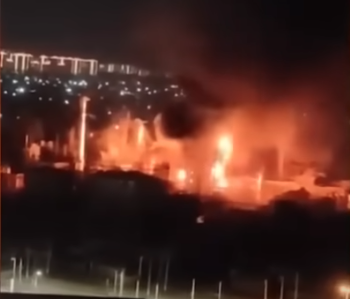
September was an especially intense month for Ukrainian long-range drone attacks on the Russian Federation's oil and energy infrastructure.
On the night between 4 and 5 September, several Ukrainian drones struck two targets simultaneously: a fuel depot near Luhansk and Rosneft's largest refinery in Ryazan, in the Oblast of the same name. The latter is of strategic importance due to the volume of oil refined each year (between 14 and 18 million tonnes) and has already been hit several times since the beginning of the conflict. The UAVs focused on the ELOU-AVT-6 refining unit, which suffered significant damage.
On the night between 7 and 8 September, a new raid targeted a pumping station on the Druzhba pipeline near Kazashchina (Bryansk Oblast) and the Ilsky refinery in Krasnodar Krai. Also on 8 September, a single drone struck and damaged Transneft's Vtorovo oil pumping station near the village of Penkino in Vladimir Oblast.
A few days later, on 12 September, Ukrainian drones also struck the Primorsk oil terminal on the Baltic Sea, one of Russia's main export hubs.
On 13 September, it was the turn of Bashneft's Novo-Ufa refinery in Ufa, in the Republic of Bashkortostan, where an impact was recorded inside the plant.
The attacks on Russian refineries and energy infrastructure are having increasingly evident consequences on the domestic fuel market (since the beginning of 2025, wholesale petrol prices have risen by more than 40-50%), and the industrial picture appears equally critical, with a sharp decline in refining capacity.








